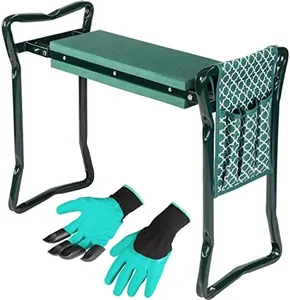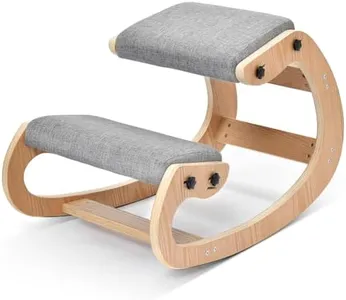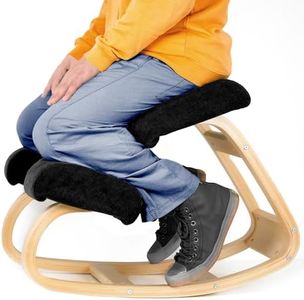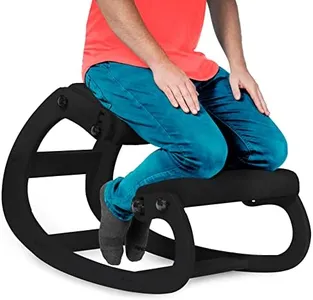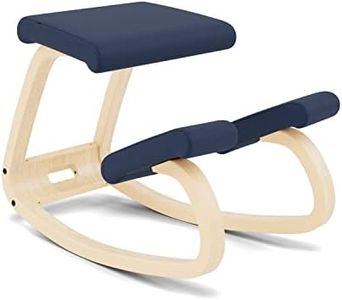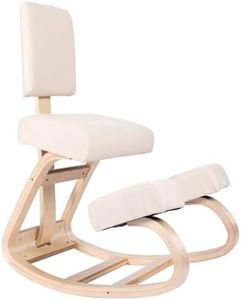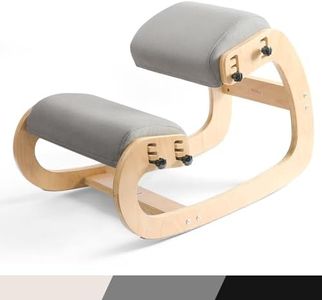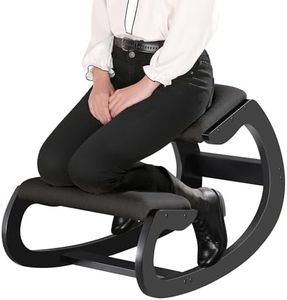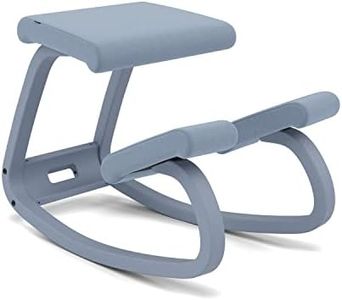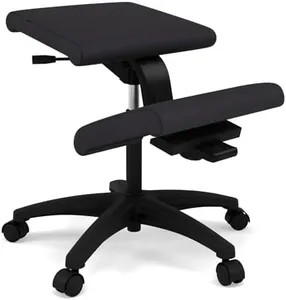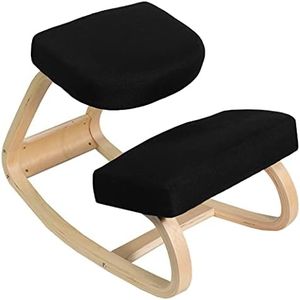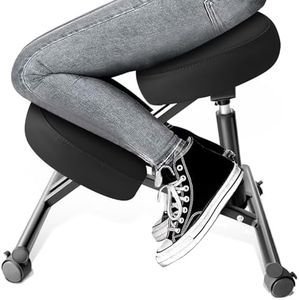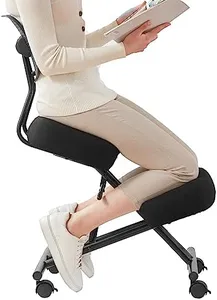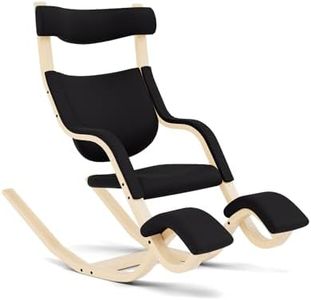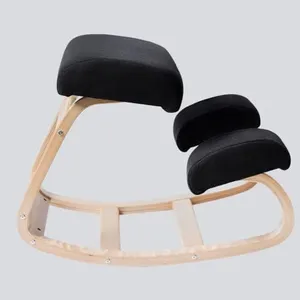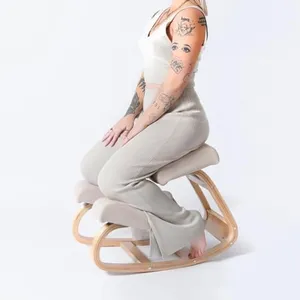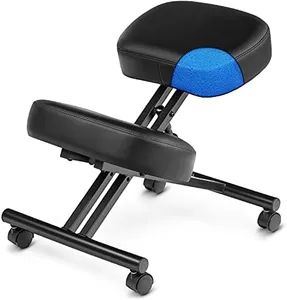10 Best Kneeling Chairs 2025 in the United States
Our technology thoroughly searches through the online shopping world, reviewing hundreds of sites. We then process and analyze this information, updating in real-time to bring you the latest top-rated products. This way, you always get the best and most current options available.

Our Top Picks
Winner
Kneeling Chair Ergonomic Posture Chair, Wood Adjustable Rocking Knee with Soft Padding, Natural Relief for Neck or Back Pain for Home Office, Max Load 300 lb
Most important from
93 reviews
The Kneeling Chair Ergonomic Posture Chair by Easyego is designed to promote better posture and relieve back and neck pain. One of its main strengths is its adjustability, offering 10 different height positions and angle adjustments to accommodate various heights and preferences, which helps in maintaining a comfortable thigh-to-calf angle. The chair's solid wood frame and high-density rebound sponge padding ensure durability and comfort, even during extended use. It supports a maximum weight capacity of 300 pounds, making it suitable for a wide range of users.
The rocking base adds an element of relaxation and helps improve blood circulation, which can be beneficial for long hours of sitting. The chair is versatile and can be used for office work, meditation, or even by individuals with ADHD, making it a multifunctional piece of furniture. However, it does have some drawbacks. At 18.2 pounds, it might be a bit heavy to move around frequently, and it lacks foldability, which could be an issue for those with limited space.
Additionally, while the chair encourages good posture, it may take some time to get used to the kneeling position, and not everyone might find it immediately comfortable. Despite these minor downsides, its assembly is straightforward with included instructions and tools, and the manufacturer offers exceptional after-sales support to address any concerns.
Most important from
93 reviews
VILNO Ergonomic Kneeling Office Chair - Rocking Home & Work Wooden Computer Desk Chairs, Back & Neck Spine Pain, Better Posture, Ergo Knee Support Stool, Cross Legged Sitting (Black)
Most important from
152 reviews
The VILNO Ergonomic Kneeling Office Chair aims to enhance posture and reduce back and neck pressure through its unique design, which promotes a 120° trunk/thigh angle. This chair can be beneficial for individuals who spend long hours at their desks, as it helps prevent slouching and relieves lower back and sciatic pain by keeping your body aligned and improving circulation. Its memory foam padding adds comfort, making it suitable for extended use of up to 10 hours.
The chair's materials, including a birch wooden frame and memory foam cushioning, ensure durability and comfort, supporting a weight capacity of up to 300 pounds. However, there are a few drawbacks to consider. The chair is not foldable or customizable, and it lacks tilting features, which might limit its adjustability for some users. Additionally, its rocking motion may not be suitable for everyone, particularly those who prefer a stable sitting experience.
While it has a polished finish and a traditional style, its design might not appeal to users seeking a more modern aesthetic. Despite these limitations, the VILNO Ergonomic Kneeling Office Chair can be a great option for those looking to improve their posture and reduce pain during long working hours in an office or home setting.
Most important from
152 reviews
NYPOT Ergonomic Kneeling Chair - Adjustable Rocking Posture Wooden Office Chair for Back Pain Relief - Kneeling Stool and Angled Chair for Home
Most important from
725 reviews
The NYPOT Ergonomic Kneeling Chair is designed to enhance comfort and promote better posture, making it a suitable option for those seeking relief from back pain while working or studying. One of its main strengths is the adjustable height, which accommodates individuals up to 6 feet tall, allowing for a customized fit. This is particularly beneficial for users who work at desks between 30 to 35 inches high. Its unique rocking design encourages movement, which can help alleviate pressure from prolonged sitting and keep users engaged.
The chair's construction features a sturdy wooden frame and a thick sponge cushion, supporting a weight capacity of up to 250 pounds, ensuring durability and stability. Additionally, the modern aesthetic of the chair allows it to blend well in various settings, whether as an office chair or a meditation stool.
However, there are some drawbacks to consider. While the chair promotes an upright posture, it may take some time for users to adjust to the kneeling position, especially if they are used to traditional chairs. The open-back design may not provide sufficient back support for everyone, particularly for those with existing back issues. Moreover, the limited mobility due to its design means it might not be the best fit for users who need to frequently shift their position. Another point to note is that while the chair has a five-year warranty, some users might find the assembly process a bit challenging. The NYPOT Ergonomic Kneeling Chair is ideal for individuals looking for an alternative to traditional seating options, particularly those focused on health and posture improvement. Its suitability might vary based on personal comfort preferences and adjustments to kneeling positions.
Most important from
725 reviews
Buying Guide for the Best Kneeling Chairs
Kneeling chairs are a great alternative to traditional office chairs, designed to promote better posture and reduce back pain. When choosing a kneeling chair, it's important to consider several key specifications to ensure you select the best fit for your needs. Understanding these specs will help you make an informed decision and find a chair that provides comfort and support throughout your workday.FAQ
Most Popular Categories Right Now
